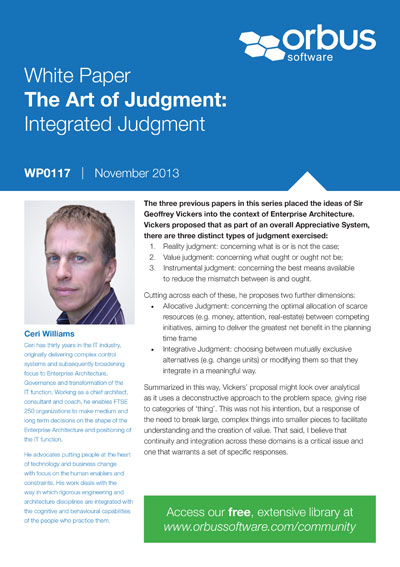In this paper, Ceri focuses on Integrated Judgment and looks at some techniques to ensure that Enterprise Architects and close stakeholders maintain continuity and coherence across these types of judgment.
In the three previous papers in this series, Ceri Williams placed the ideas of Sir Geoffrey Vickers into the context of Enterprise Architecture. Vickers proposed that as part of an overall Appreciative System there are three distinct types of judgment exercised.
In this paper, Ceri focuses on Integrated Judgment and looks at some techniques to ensure that Enterprise Architects and close stakeholders maintain continuity and coherence across these types of judgment. Ceri breaks down the topic of continuity and shows how it enables coherence as it operates across:
- Space – the domain of interest (or ‘System of Interest’ in engineering terms). This includes the external environment – the ‘space’ outside the System of Interest and how it impacts the System itself.
- Process – interoperability and co-ordination of information and action between types of judgment
- People – the individuals involved in all the judgment processes
- Time – understanding a situation, analyzing options and putting choices into effect take time. The passage of time enables shifts to occur in Space, Process, People and Values
- Values – the objectives and criteria by which reality is selected (reality is a choice), a future envisioned and actions to achieve it are committed to. This includes focus and priorities as recognition of constraints (e.g. resources, budgets, time) demands continuity of focus and relative priorities.
